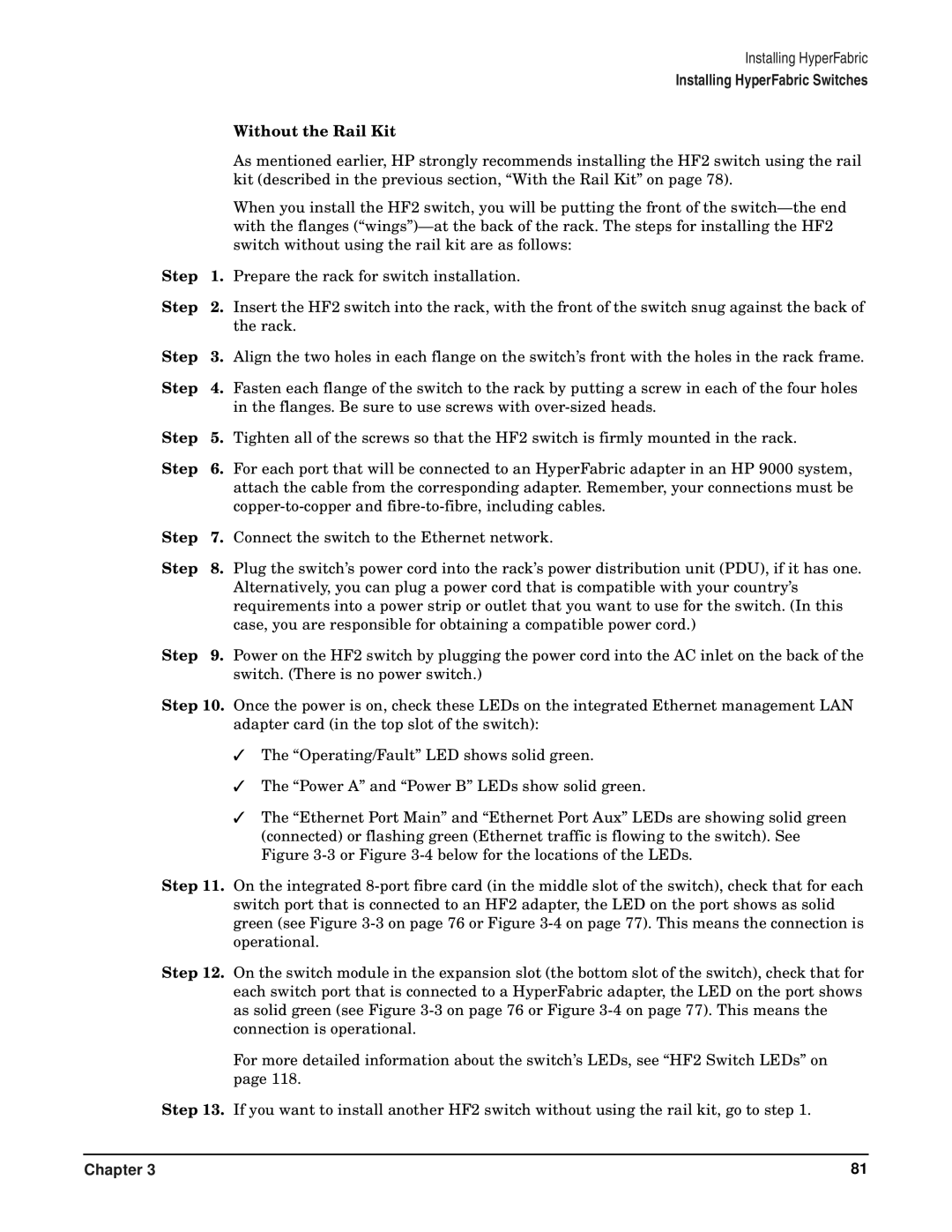Installing HyperFabric
Installing HyperFabric Switches
|
| Without the Rail Kit |
|
| As mentioned earlier, HP strongly recommends installing the HF2 switch using the rail |
|
| kit (described in the previous section, “With the Rail Kit” on page 78). |
|
| When you install the HF2 switch, you will be putting the front of the |
|
| with the flanges |
|
| switch without using the rail kit are as follows: |
Step | 1. | Prepare the rack for switch installation. |
Step | 2. | Insert the HF2 switch into the rack, with the front of the switch snug against the back of |
|
| the rack. |
Step | 3. | Align the two holes in each flange on the switch’s front with the holes in the rack frame. |
Step | 4. | Fasten each flange of the switch to the rack by putting a screw in each of the four holes |
|
| in the flanges. Be sure to use screws with |
Step | 5. | Tighten all of the screws so that the HF2 switch is firmly mounted in the rack. |
Step | 6. | For each port that will be connected to an HyperFabric adapter in an HP 9000 system, |
|
| attach the cable from the corresponding adapter. Remember, your connections must be |
|
| |
Step | 7. | Connect the switch to the Ethernet network. |
Step | 8. | Plug the switch’s power cord into the rack’s power distribution unit (PDU), if it has one. |
|
| Alternatively, you can plug a power cord that is compatible with your country’s |
|
| requirements into a power strip or outlet that you want to use for the switch. (In this |
|
| case, you are responsible for obtaining a compatible power cord.) |
Step | 9. | Power on the HF2 switch by plugging the power cord into the AC inlet on the back of the |
|
| switch. (There is no power switch.) |
Step 10. Once the power is on, check these LEDs on the integrated Ethernet management LAN adapter card (in the top slot of the switch):
✓The “Operating/Fault” LED shows solid green.
✓The “Power A” and “Power B” LEDs show solid green.
✓The “Ethernet Port Main” and “Ethernet Port Aux” LEDs are showing solid green (connected) or flashing green (Ethernet traffic is flowing to the switch). See Figure
Step 11. On the integrated
Step 12. On the switch module in the expansion slot (the bottom slot of the switch), check that for each switch port that is connected to a HyperFabric adapter, the LED on the port shows as solid green (see Figure
For more detailed information about the switch’s LEDs, see “HF2 Switch LEDs” on page 118.
Step 13. If you want to install another HF2 switch without using the rail kit, go to step 1.
Chapter 3 | 81 |
